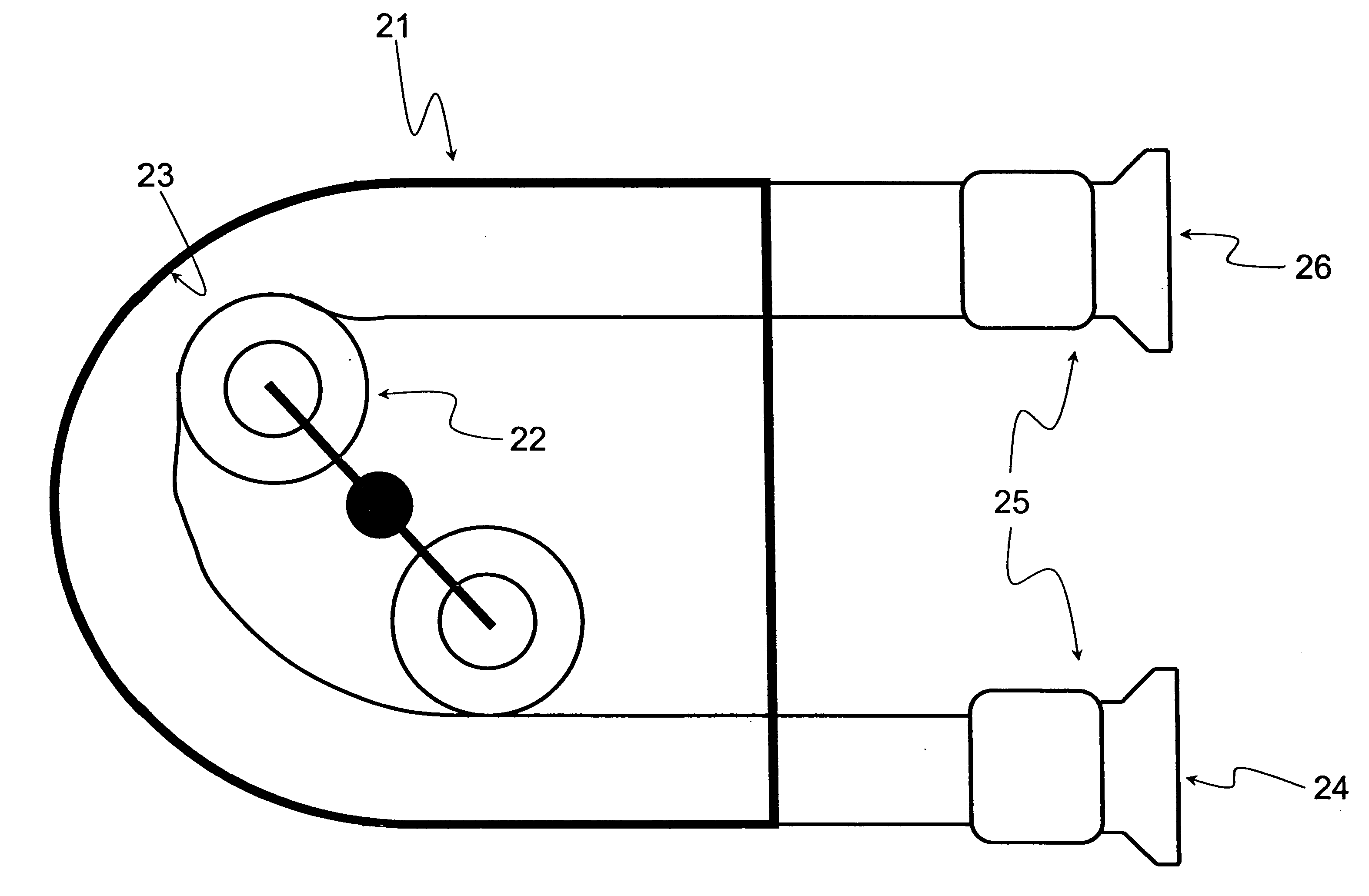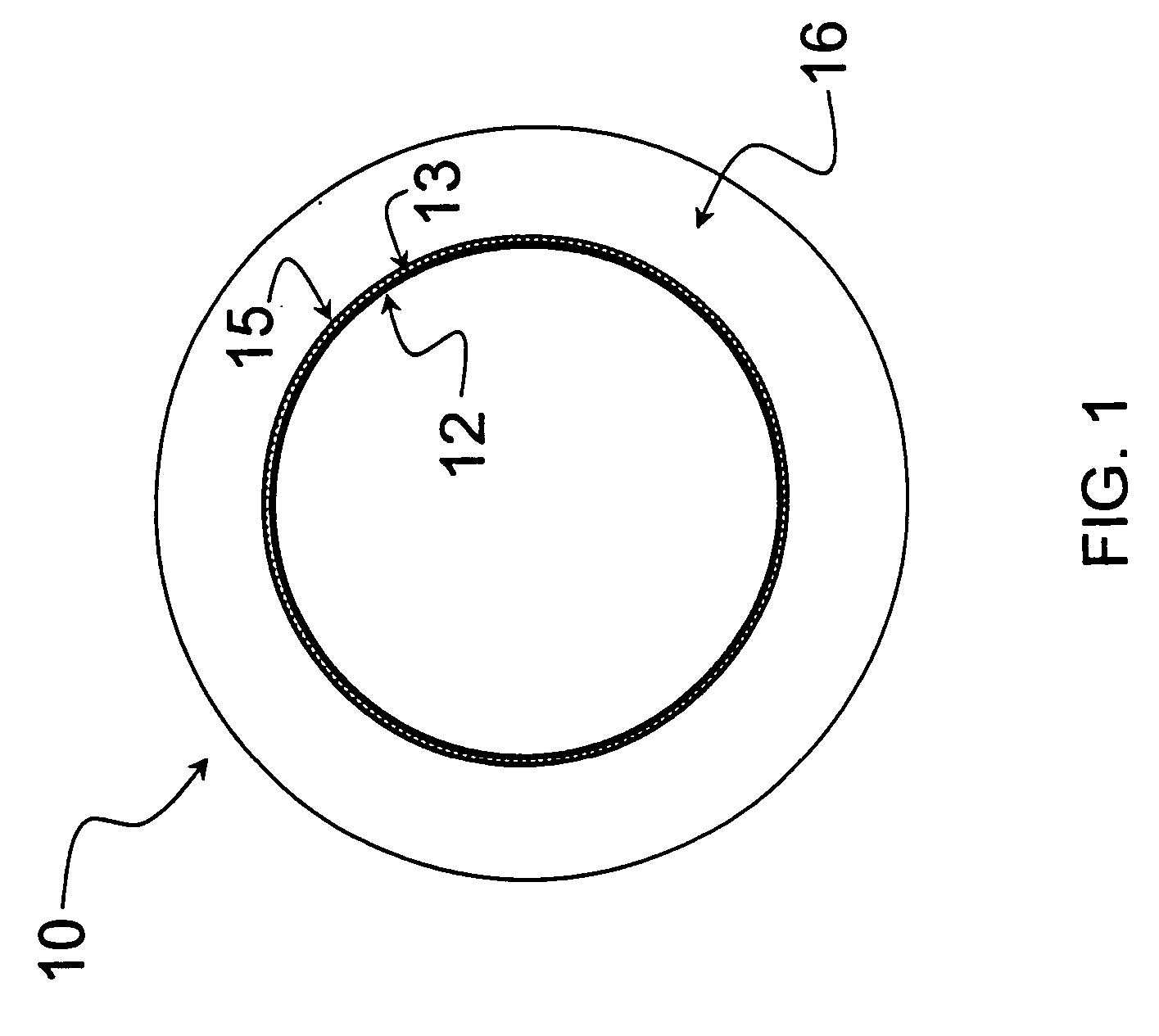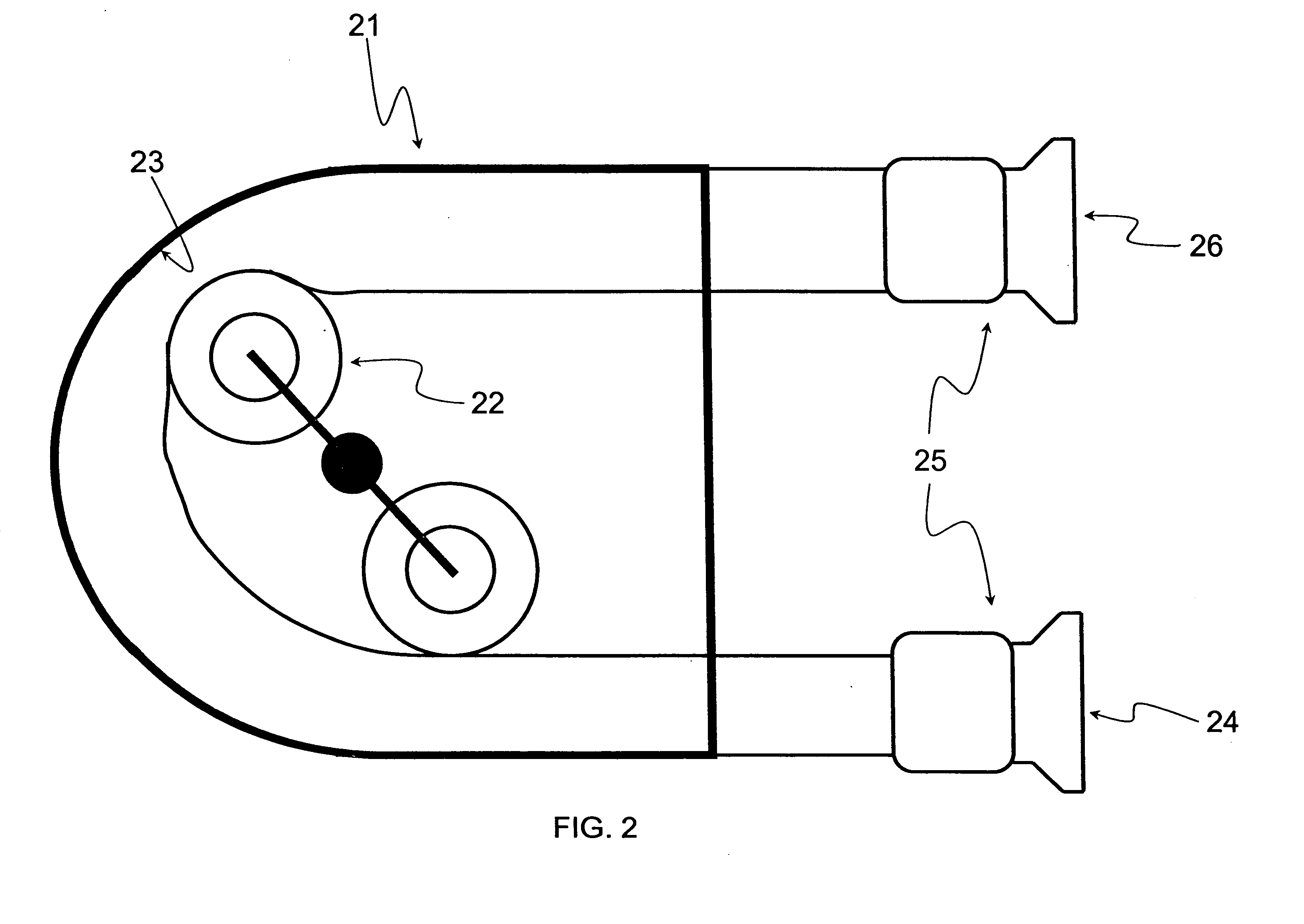Fluoroplastic composite elastomer
a fluoroplastic composite and elastomer technology, applied in the direction of machines/engines, synthetic resin layered products, packaging, etc., can solve the problems of affecting the flexural endurance of other pump types, such as progressive cavity pumps and centrifugal pumps, and damage to the process product and the internal workings of the pump, so as to improve the flexural endurance
- Summary
- Abstract
- Description
- Claims
- Application Information
AI Technical Summary
Benefits of technology
Problems solved by technology
Method used
Image
Examples
example 1
25×4.8 mm Tube
[0034] A film of expanded PTFE-PFA was obtained from W. L. Gore & Associates, Inc. (Newark, Del.) as designated by the part number (5815060). The film had a density of 2.185 g / ml and a thickness of 0.020 mm. The 56 cm wide film was wrapped 13 times around a cylindrical metal mandrel having an OD of 25.4 mm and was heated for 60 min at 371° C. The resultant monolythic tube liner was removed from the mandrel and etched with a sodium ammonia solution. The resultant etched tube was placed back onto a metal mandrel and wrapped with a 0.2 mm thick adhesive tie-layer from Advanced Elastomers (8291-65TB) and was heated at 125° C. for 15 minutes. Next, the cooled liner was covered with a length of extruded Santoprene™ tubing obtained from Watson-Marlow Bredel (part number 903.0254.048). The article was wrapped with a nylon cure wrap to compress the composite and eliminate air entrapment. The mandrel was heated to a temperature of 175° C. for a period of 60 minutes to bond the ...
example 2
6.4 mm Tube with Water vs. Solvent
[0044] A film of expanded PTFE-PFA was obtained from W. L. Gore & Associates, Inc. (Newark, Del,) as designated by the part number (5815060). The film had a density of 2.185 g / ml and a thickness of 0.020 mm. The 56 cm wide film was wrapped 6 times around a cylindrical metal mandrel having an OD of 6.4 mm and was heated for 70 min at 366° C. The resultant monolythic tube liner was removed from the mandrel and etched with a sodium ammonia solution. The resultant etched tube was placed back onto a metal mandrel and wrapped with a 0.2 mm thick adhesive tie-layer from Advanced Elastomers (8291-65TB) and was heated at 125° C. for 15 minutes. Next, the cooled liner was covered with a length of extruded Santoprene(™) tube obtained from Watson-Marlow Bredel (part number 903.0064.032). The article was wrapped with a nylon cure wrap to compress the composite and eliminate air entrapment. The mandrel was heated to a temperature of 175° C. for a period of 60 mi...
example 3
19×4.8 mm Silicone & Natural Rubber Covers
[0049] A film of expanded PTFE-PFA was obtained from W. L. Gore & Associates, Inc. (Newark, Del.) as designated by the part number (5815060). The film had a density of 2.185 g / ml and a thickness of 0.020 mm. The 56 cm wide film was wrapped 13 times around a cylindrical metal mandrel having an OD of 19 mm and was heated for 60 min at 371° C. The resultant monolythic tube liner was removed from the mandrel and etched with a sodium ammonia solution. The resultant etched tube was placed back onto a metal mandrel and brush coated with a platinum silicone liquid adhesive from Dow Corning (DC 577). Next, the liner was covered with a length of platinum silicone tubing obtained from Watson-Marlow Bredel (part number 913.0190.048). The article was wrapped with a nylon cure wrap to compress the composite and eliminate air entrapment. The mandrel was heated to a temperature of 175° C. for a period of 45 minutes to bond the etched liner to the interior ...
PUM
| Property | Measurement | Unit |
|---|---|---|
| inner diameter | aaaaa | aaaaa |
| inner diameter | aaaaa | aaaaa |
| thickness | aaaaa | aaaaa |
Abstract
Description
Claims
Application Information
 Login to View More
Login to View More - R&D
- Intellectual Property
- Life Sciences
- Materials
- Tech Scout
- Unparalleled Data Quality
- Higher Quality Content
- 60% Fewer Hallucinations
Browse by: Latest US Patents, China's latest patents, Technical Efficacy Thesaurus, Application Domain, Technology Topic, Popular Technical Reports.
© 2025 PatSnap. All rights reserved.Legal|Privacy policy|Modern Slavery Act Transparency Statement|Sitemap|About US| Contact US: help@patsnap.com



